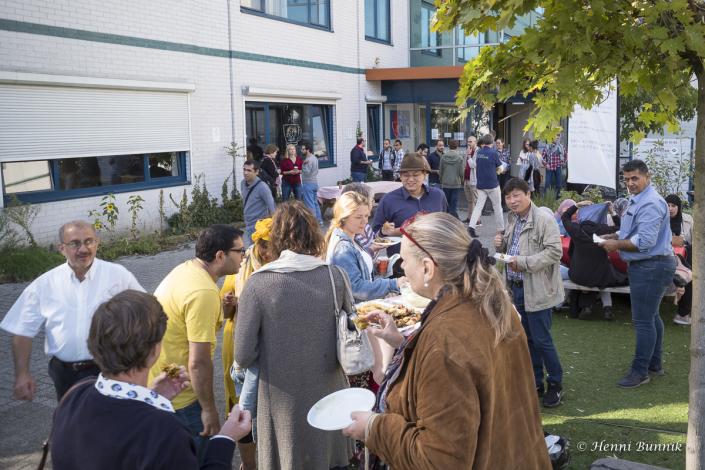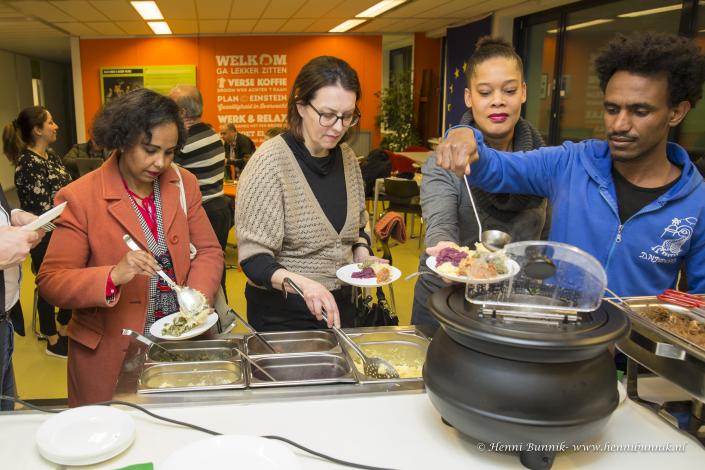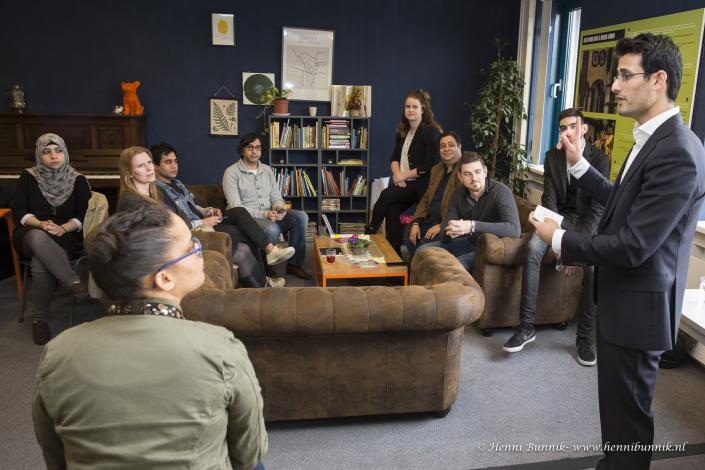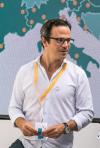Understanding Plan Einstein as a core set of principles
Underlying everything that Utrecht has been doing through Plan Einstein are a set of principles that need to be respected at all times in the way that newcomers are received at local level. At the most fundamental level, these include: treating people in ways that fully respect their human rights (human-rights based approach); offering support and opportunities that enable participants to further develop themselves wherever their ongoing life journey takes them (‘future-free’ approach); and supporting people to reconstruct and give meaning to their life story after experiencing the dislocation, trauma and loss associated with forced migration (‘self-narrative restoration’).
| A. Respect for Human Rights | B. Future-Free Approach | C. Self-Narrative Restoration |
Figure: The three fundamental principles of Plan Einstein
But understanding how to implement such high-level principles is not straightforward. The work of the initial ‘Understand Phase’ of the new ‘Plan Einstein Academy’ network journey has included the identification of five implementation principles, which can be used to guide the definition of specific actions. The delivery of these principles in practice is essential to respect the fundamental principles outlined above.
The implementation principles identified link directly with the original UIA project idea as well as lessons which emerged from the project experience. They include the importance of taking into account the shared wants and needs of neighbourhood members and newcomers from the first day of their arrival (which itself supports the process of self-narrative restoration and respect of an individual’s human rights), as well as providing activities for personal and professional development.
Other principles to be implemented include the welcoming spaces for meaningful encounters on the one hand and specific activities to bring newcomers and neighbourhood members together on an equal footing – as mentioned above.
Finally, they include the necessity of mobilising a supportive ecosystem of stakeholders, since the range of actions and interventions needed cannot be delivered by the municipality acting alone.
| 1. | Taking into account the shared wants and needs of locals and newcomers 'from day 1' |
| 2. | Activities supporting personal and professional development |
| 3. | Providing attractive spaces for meaningful encounters between locals and newcomers |
| 4. | Joint activities for locals and newcomers on an equal footing |
| 5. | Mobilising a supporting ecosystem of stakeholders |
Figure: Five implementation principles of Plan Einstein
Assessing the transferability of the Plan Einstein approach
Another of the key tasks of the network in the first six months of its activities has been to think about how the Plan Einstein approach could be applied in the local context of each partner. In practice, this has involved three distinct steps. The first was to build a really clear understanding of the Plan Einstein approach itself. All partners had the opportunity to visit Utrecht at the end of November 2024 for a deep dive into the innovation. This was followed up by online sessions in January 2025 to explore further details and ask follow-up questions on the journey and experiences of the city of Utrecht.
The second step has included study visits to help build a joint understanding of the local context in each partner, including the types of migration they typically experience, the national, regional and local policy context, and the range of potentially relevant local stakeholders. The third step has then been to try to match the potential and possibilities of Plan Einstein with these different local realities in ways that make the most sense and offer the greatest potential for positive change.
One of the really exciting aspects of exploring the transfer potential of Plan Einstein has been hearing how Utrecht itself turned the idea from a large-scale innovation project into local policy. The pilot site supported by the UIA project is no longer operational, but now Utrecht has four Plan Einstein locations across the city, all demonstrating how the principles at the heart of Plan Einstein can be applied flexibly in different local contexts - and without UIA-scale funding.
Just like Utrecht itself, the project partners are now thinking about how to apply Plan Einstein principles in different local contexts. Some are considering including a co-housing element, but most are thinking in terms of enhancing an ecosystem approach that seeks new ways to bring newcomers and neighbourhood members together on an equal footing, including through both organised activities and ‘welcoming spaces for meaningful encounters’.
A final word
There are many challenges ahead, including local mindsets which can be resistant to new arrivals and political contexts which are increasingly difficult. There can also be counter-intuitive challenges involved in trying to organise activities that bring newcomers and locals together as equals when budgets are allocated to specific groups and are then somehow not allowed to be used for inclusive activities open to all.





